George Vikram Paul
age ~61
from Merrimack, NH
- Also known as:
-
- George V Paul
- George Shanty Paul
- George V Vikram
- Geroge V Paul
- George V George
- Phone and address:
-
9 Nathan Hale Ln, Merrimack, NH 03054
6034245243
George Paul Phones & Addresses
- 9 Nathan Hale Ln, Merrimack, NH 03054 • 6034245243
- 34 Kessler Farm Dr #595, Nashua, NH 03063
- Bedford, NH
- 5000 Forbes Ave, Pittsburgh, PA 15213
- 5525 Ellsworth Ave, Pittsburgh, PA 15232 • 7343977785
- 42646 Maude Ct, Belleville, MI 48111 • 7343977785
- Van Buren Twp, MI
- Ypsilanti, MI
- Troy, MI
Work
-
Company:George,paul
-
Address:106 Warner Hill Road, Deerfield, NH 03037
-
Phones:6034219125
-
Position:Administrator
-
Industries:Prepackaged Software
Resumes

Gl Accountant -Operations Manager
view sourceLocation:
Ernakulam, Kerala, India
Industry:
Financial Services
Work:
Norbert Dentressangle UK - Northampton, United Kingdom Aug 2012 - Jan 2013
Inventory Control
EXL Service - Cochin Area, India 2010 - May 2012
Assistant Manager,EXL
The Fitness Edge - Fairfiled, CT, US Aug 2008 - Feb 2010
Asst Controller/Accountant
GE Capital Jan 2001 - Feb 2003
Cash Accountant
Inventory Control
EXL Service - Cochin Area, India 2010 - May 2012
Assistant Manager,EXL
The Fitness Edge - Fairfiled, CT, US Aug 2008 - Feb 2010
Asst Controller/Accountant
GE Capital Jan 2001 - Feb 2003
Cash Accountant
Education:
M.G. University 1994 - 1998
Bcom, Accounting/Business
Bcom, Accounting/Business
Languages:
English
Awards:
Team Extra Miler Award
GE Capital
GE Excellence Award
GE Capital
GE Capital
GE Excellence Award
GE Capital
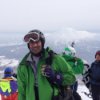
Anesthesiologist
view sourcePosition:
Anesthesiologist at Ventura County Medical Center
Location:
Ventura, California
Industry:
Medical Practice
Work:
Ventura County Medical Center since Jul 2006
Anesthesiologist
Anesthesiologist

George Paul
view sourceLocation:
United States

George Paul
view sourceLocation:
United States

Manenger Na Hsbc
view sourcePosition:
manenger at HSBC
Location:
Cidade de Nova Iorque e Região, Estados Unidos
Industry:
Financial Services
Work:
HSBC No momento ocupa este cargo
manenger
manenger

George Paul
view sourcePosition:
Director Technical Services at National Air Carrier Association, Director of Technical Services at NACA, Director technical services at NACA, director technical services at NACA
Location:
United States
Work:
National Air Carrier Association since 2010
Director Technical Services
NACA since 2010
Director of Technical Services
NACA since 2010
Director technical services
NACA since 2009
director technical services
MAXjet Airways - Dulles virginia 2007 - 2008
COO
Director Technical Services
NACA since 2010
Director of Technical Services
NACA since 2010
Director technical services
NACA since 2009
director technical services
MAXjet Airways - Dulles virginia 2007 - 2008
COO

George Paul
view sourceLocation:
United States

George Paul
view sourceLocation:
United States
Medicine Doctors

George Paul
view sourceSpecialties:
Anesthesiology
Work:
Ventura County Medical Center Surgery
3291 Loma Vis Rd FL 2, Ventura, CA 93003
8056526237 (phone), 8056526184 (fax)
3291 Loma Vis Rd FL 2, Ventura, CA 93003
8056526237 (phone), 8056526184 (fax)
Education:
Medical School
Semmelweis Orvostudomanyi Egyetem, Budapest, Hungary
Graduated: 2000
Semmelweis Orvostudomanyi Egyetem, Budapest, Hungary
Graduated: 2000
Languages:
English
Spanish
Tagalog
Spanish
Tagalog
Description:
Dr. Paul graduated from the Semmelweis Orvostudomanyi Egyetem, Budapest, Hungary in 2000. He works in Ventura, CA and specializes in Anesthesiology. Dr. Paul is affiliated with Ventura County Medical Center.
License Records
George Michael Paul
License #:
008016
Category:
Dentist
Issued Date:
Jul 1, 1924
Type:
DENTISTRY
George Paul
License #:
07807 - Expired
Category:
Contractor
Expiration Date:
Sep 30, 2004
George Paul
License #:
Unknown - Expired
Category:
Nursing Support
Effective Date:
Jun 6, 2011
Type:
Nurse Aide
Us Patents
-
Gesture-Controlled Interfaces For Self-Service Machines And Other Applications
view source -
US Patent:6681031, Jan 20, 2004
-
Filed:Aug 10, 1999
-
Appl. No.:09/371460
-
Inventors:Charles J. Cohen - Ann Arbor MI
Glenn Beach - Ypsilanti MI
Brook Cavell - Ypsilanti MI
Gene Foulk - Ann Arbor MI
Charles J. Jacobus - Ann Arbor MI
Jay Obermark - Ann Arbor MI
George Paul - Ypsilanti MI -
Assignee:Cybernet Systems Corporation - Ann Arbor MI
-
International Classification:G06K 900
-
US Classification:382103, 382209, 701 45, 345473, 345474
-
Abstract:A gesture recognition interface for use in controlling self-service machines and other devices is disclosed. A gesture is defined as motions and kinematic poses generated by humans, animals, or machines. Specific body features are tracked, and static and motion gestures are interpreted. Motion gestures are defined as a family of parametrically delimited oscillatory motions, modeled as a linear-in-parameters dynamic system with added geometric constraints to allow for real-time recognition using a small amount of memory and processing time. A linear least squares method is preferably used to determine the parameters which represent each gesture. Feature position measure is used in conjunction with a bank of predictor bins seeded with the gesture parameters, and the system determines which bin best fits the observed motion. Recognizing static pose gestures is preferably performed by localizing the body/object from the rest of the image, describing that object, and identifying that description. The disclosure details methods for gesture recognition, as well as the overall architecture for using gesture recognition to control of devices, including self-service machines.
-
Gesture-Controlled Interfaces For Self-Service Machines And Other Applications
view source -
US Patent:6950534, Sep 27, 2005
-
Filed:Jan 16, 2004
-
Appl. No.:10/759459
-
Inventors:Charles J. Cohen - Ann Arbor MI, US
Glenn Beach - Brooklyn MI, US
Brook Cavell - Ann Arbor MI, US
Gene Foulk - Ann Arbor MI, US
Charles J. Jacobus - Ann Arbor MI, US
Jay Obermark - Ann Arbor MI, US
George Paul - Bedford NH, US -
Assignee:Cybernet Systems Corporation - Ann Arbor MI
-
International Classification:G06K009/00
-
US Classification:382103, 382276
-
Abstract:A gesture recognition interface for use in controlling self-service machines and other devices is disclosed. A gesture is defined as motions and kinematic poses generated by humans, animals, or machines. Specific body features are tracked, and static and motion gestures are interpreted. Motion gestures are defined as a family of parametrically delimited oscillatory motions, modeled as a linear-in-parameters dynamic system with added geometric constraints to allow for real-time recognition using a small amount of memory and processing time. A linear least squares method is preferably used to determine the parameters which represent each gesture. Feature position measure is used in conjunction with a bank of predictor bins seeded with the gesture parameters, and the system determines which bin best fits the observed motion. Recognizing static pose gestures is preferably performed by localizing the body/object from the rest of the image, describing that object, and identifying that description. The disclosure details methods for gesture recognition, as well as the overall architecture for using gesture recognition to control of devices, including self-service machines.
-
Behavior Recognition System
view source -
US Patent:7036094, Apr 25, 2006
-
Filed:Mar 31, 2000
-
Appl. No.:09/540461
-
Inventors:Charles J. Cohen - Ann Arbor MI, US
Glenn Beach - Ypsilanti MI, US
Brook Cavell - Ypsilanti MI, US
Gene Foulk - Ann Arbor MI, US
Charles J. Jacobus - Ann Arbor MI, US
Jay Obermark - Ann Arbor MI, US
George Paul - Belleville MI, US -
Assignee:Cybernet Systems Corporation - Ann Arbor MI
-
International Classification:G09G 5/00
-
US Classification:715863
-
Abstract:A system for recognizing various human and creature motion gaits and behaviors is presented. These behaviors are defined as combinations of “gestures” identified on various parts of a body in motion. For example, the leg gestures generated when a person runs are different than when a person walks. The system described here can identify such differences and categorize these behaviors. Gestures, as previously defined, are motions generated by humans, animals, or machines. Where in the previous patent only one gesture was recognized at a time, in this system, multiple gestures on a body (or bodies) are recognized simultaneously and used in determining behaviors. If multiple bodies are tracked by the system, then overall formations and behaviors (such as military goals) can be determined.
-
Tracking And Gesture Recognition System Particularly Suited To Vehicular Control Applications
view source -
US Patent:7050606, May 23, 2006
-
Filed:Nov 1, 2001
-
Appl. No.:10/004058
-
Inventors:George V. Paul - Belleville MI, US
Glenn J. Beach - Ypsilanti MI, US
Charles J. Cohen - Ann Arbor MI, US
Charles J. Jacobus - Ann Arbor MI, US -
Assignee:Cybernet Systems Corporation - Ann Arbor MI
-
International Classification:G06K 9/00
-
US Classification:382104, 348154, 701 45
-
Abstract:A system and method tracks the movements of a driver or passenger in a vehicle (ground, water, air, or other) and controls devices in accordance with position, motion, and/or body or hand gestures or movements. According to one embodiment, an operator or passenger uses the invention to control comfort or entertainment features such the heater, air conditioner, lights, mirror positions or the radio/CD player using hand gestures. An alternative embodiment facilitates the automatic adjustment of car seating restraints based on head position. Yet another embodiment is used to determine when to fire an airbag (and at what velocity or orientation) based on the position of a person in a vehicle seat. The invention may also be used to control systems outside of the vehicle. The on-board sensor system would be used to track the driver or passenger, but when the algorithms produce a command for a desired response, that response (or just position and gesture information) could be transmitted via various methods (wireless, light, whatever) to other systems outside the vehicle to control devices located outside the vehicle.
-
Real-Time Head Tracking System For Computer Games And Other Applications
view source -
US Patent:7121946, Oct 17, 2006
-
Filed:Jun 29, 2001
-
Appl. No.:09/896150
-
Inventors:George V. Paul - Belleville MI, US
Glenn J. Beach - Ypsilanti MI, US
Charles J. Cohen - Ann Arbor MI, US
Charles J. Jacobus - Ann Arbor MI, US -
Assignee:Cybernet Systems Corporation - Ann Arbor MI
-
International Classification:A63F 13/10
-
US Classification:463 36
-
Abstract:A real-time computer vision system tracks the head of a computer user to implement real-time control of games or other applications. The imaging hardware includes a color camera, frame grabber, and processor. The software consists of the low-level image grabbing software and a tracking algorithm. The system tracks objects based on the color, motion and/or shape of the object in the image. A color matching function is used to compute three measures of the target's probable location based on the target color, shape and motion. The method then computes the most probable location of the target using a weighting technique. Once the system is running, a graphical user interface displays the live image from the color camera on the computer screen. The operator can then use the mouse to select a target for tracking. The system will then keep track of the moving target in the scene in real-time.
-
Gesture-Controlled Interfaces For Self-Service Machines And Other Applications
view source -
US Patent:7460690, Dec 2, 2008
-
Filed:Sep 14, 2005
-
Appl. No.:11/226831
-
Inventors:Charles J. Cohen - Ann Arbor MI, US
Glenn Beach - Ypsilanti MI, US
Brook Cavell - Ypsilanti MI, US
Gene Foulk - Ann Arbor MI, US
Charles J. Jacobus - Ann Arbor MI, US
Jay Obermark - Ann Arbor MI, US
George Paul - Bedford NH, US -
Assignee:Cybernet Systems Corporation - Ann Arbor MI
-
International Classification:G06K 9/00
G06K 9/36
G06F 3/033 -
US Classification:382103, 382276, 715863
-
Abstract:A gesture recognition interface for use in controlling self-service machines and other devices is disclosed. A gesture is defined as motions and kinematic poses generated by humans, animals, or machines. Specific body features are tracked, and static and motion gestures are interpreted. Motion gestures are defined as a family of parametrically delimited oscillatory motions, modeled as a linear-in-parameters dynamic system with added geometric constraints to allow for real-time recognition using a small amount of memory and processing time. A linear least squares method is preferably used to determine the parameters which represent each gesture. Feature position measure is used in conjunction with a bank of predictor bins seeded with the gesture parameters, and the system determines which bin best fits the observed motion. Recognizing static pose gestures is preferably performed by localizing the body/object from the rest of the image, describing that object, and identifying that description. The disclosure details methods for gesture recognition, as well as the overall architecture for using gesture recognition to control of devices, including self-service machines.
-
Gesture-Controlled Interfaces For Self-Service Machines And Other Applications
view source -
US Patent:7668340, Feb 23, 2010
-
Filed:Dec 2, 2008
-
Appl. No.:12/326540
-
Inventors:Charles J. Cohen - Ann Arbor MI, US
Glenn J. Beach - Grass Lake MI, US
Brook Cavell - Ann Arbor MI, US
Eugene Foulk - Ann Arbor MI, US
Charles J. Jacobus - Ann Arbor MI, US
Jay Obermark - Ann Arbor MI, US
George V. Paul - Belleville MI, US -
Assignee:Cybernet Systems Corporation - Ann Arbor MI
-
International Classification:G06K 9/00
G06F 3/033 -
US Classification:382103, 715863
-
Abstract:A gesture recognition interface for use in controlling self-service machines and other devices is disclosed. A gesture is defined as motions and kinematic poses generated by humans, animals, or machines. Specific body features are tracked, and static and motion gestures are interpreted. Motion gestures are defined as a family of parametrically delimited oscillatory motions, modeled as a linear-in-parameters dynamic system with added geometric constraints to allow for real-time recognition using a small amount of memory and processing time. A linear least squares method is preferably used to determine the parameters which represent each gesture. Feature position measure is used in conjunction with a bank of predictor bins seeded with the gesture parameters, and the system determines which bin best fits the observed motion. Recognizing static pose gestures is preferably performed by localizing the body/object from the rest of the image, describing that object, and identifying that description. The disclosure details methods for gesture recognition, as well as the overall architecture for using gesture recognition to control of devices, including self-service machines.
-
Realtime Object Tracking System
view source -
US Patent:7684592, Mar 23, 2010
-
Filed:Jan 14, 2008
-
Appl. No.:12/013717
-
Inventors:George V. Paul - Belleville MI, US
Glenn J. Beach - Brooklyn MI, US
Charles J. Cohen - Ann Arbor MI, US
Charles J. Jacobus - Ann Arbor MI, US -
Assignee:Cybernet Systems Corporation - Ann Arbor MI
-
International Classification:G06K 9/00
-
US Classification:382103, 382107, 382164, 382165, 382209
-
Abstract:A real-time computer vision system tracks one or more objects moving in a scene using a target location technique which does not involve searching. The imaging hardware includes a color camera, frame grabber and processor. The software consists of the low-level image grabbing software and a tracking algorithm. The system tracks objects based on the color, motion and/or shape of the object in the image. A color matching function is used to compute three measures of the target's probable location based on the target color, shape and motion. The method then computes the most probable location of the target using a weighting technique. Once the system is running, a graphical user interface displays the live image from the color camera on the computer screen. The operator can then use the mouse to select a target for tracking. The system will then keep track of the moving target in the scene in real-time.
Isbn (Books And Publications)

Parallel Systems and Computation: Proceedings of the 1986 IBM Europe Institute--Seminar on Parallel Computing, Oberlech, Austria, August 11-15, 1986
view sourceAuthor
George Paul
ISBN #
0444703713

Roses Have Thorns: An Anecdotal Journey through the World of Advertising
view sourceAuthor
George Paul
ISBN #
8171676804

The Talking Machine : An Illustrated Compendium, 1877-1929
view sourceAuthor
George F. Paul
ISBN #
0764302418



Phonographs With Flair: A Century of Style in Sound Reproduction
view sourceAuthor
George F. Paul
ISBN #
0764312812


The Talking Machine: An Illustrated Compendium 1877-1929
view sourceAuthor
George F. Paul
ISBN #
0764322400
Name / Title
Company / Classification
Phones & Addresses
Administrator
George,paul
Prepackaged Software
Prepackaged Software
106 Warner Hill Road, Deerfield, NH 03037
Federal Program Director
Tewksbury Public School District
Public Elementary School
Public Elementary School
133 N St, Tewksbury, MA 01876
9786407875, 9786407879
9786407875, 9786407879
UPPER, LTD
TOPDOG MANAGEMENT GROUP, LLC
PIT STOP 3, LTD
THE MANSFIELD LITTLE THEATRE - COMMUNITY PLAYERS, INC
Classmates

George Paul
view sourceSchools:
Our Lady of Perpetual Help High School Chesaning MI 1958-1962

George Paul
view sourceSchools:
Ann Arbor Learning Community Ann Arbor MI 1963-1967
Community:
Robert Kowalczyk, Diane Acree, Donald Bradley

George Paul
view sourceSchools:
Rankin Academy Star MS 1970-1974
Community:
Michelle Hawthorne, Rachael Rourks

George Paul II (Paul)
view sourceSchools:
Autauga County High School Prattville AL 1960-1964
Community:
Dianne Tenney, Pat Groves

George Paul
view sourceSchools:
Our Lady of Perpetual Help High School Chesaning MI 1958-1962

George Paul
view sourceSchools:
Montebello Elementary School 44 Baltimore MD 1947-1953, Roland Park Junior High School Baltimore MD 1953-1955
Community:
Bernard Dobrzykowski, Arthur Demoine

George Paul
view sourceSchools:
Dorchester High School for Boys Dorchester MA 1939-1943
Community:
Francis Donnelly, Edward Samiljan

George Paul
view sourceSchools:
Episcopal High School Baton Rouge LA 1971-1975
Community:
Debbie Gilbert, Liz Dixon, Katherine Pogue, Doug Alford, Kathy Estes
Plaxo

Paul George
view sourceCovenant Health

Paul George
view sourceOperations Manager at MGA Insurance Brokers Pty

Paul George
view sourceVice President; General Manager at Sidewinder Pump...
Googleplus

George Paul
Work:
Hyder - Civil Engineer (2012)
Mouchel - Civil Engineer (2007-2012)
Sobha Developers Ltd. - PQS (2006-2007)
Mouchel - Civil Engineer (2007-2012)
Sobha Developers Ltd. - PQS (2006-2007)
Education:
Mar Athanasius College Of Engineering - Civil Engg, Sainik School
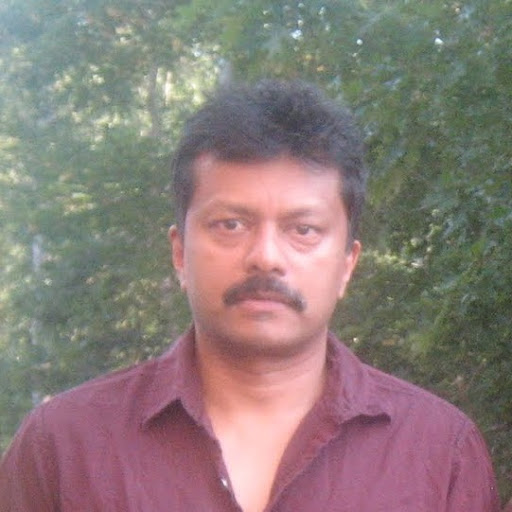
George Paul
Lived:
Merrimack, NH, USA
Kerala, India.
Pittsburgh, PA, Belleville, MI
Kerala, India.
Pittsburgh, PA, Belleville, MI
Education:
Carnegie Mellon University - PhD in Robotics

George Paul
Lived:
Merrimack, NH
Chicopee, MA
Chicopee, MA
Work:
NHANG
U.S. Army
U.S. Army

George Paul
Education:
TocH Institute of Science & Technology - Information Technology, Nirmala HSS - HSE, Nirmala HSS - SSLC

George Paul
Work:
USA
Education:
UK
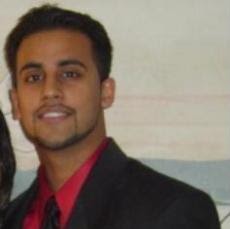
George Paul
Education:
St. John's University - Biology, Inter-American University of Puerto Rico - Optometry
Bragging Rights:
I'm the coolest guy you'll ever meet, of course! =)

George Paul
Work:
Hollister Co.
Education:
Wayne State University

George Paul
Education:
University of Madras - Engineering

George Anderson Paul
view source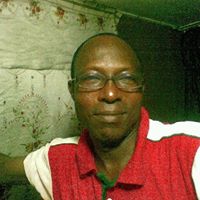
George Daferede Paul
view source
George Valayil Paul
view source
George Paul Arab
view source
George Emenike Paul
view source
George Paul Bradley
view source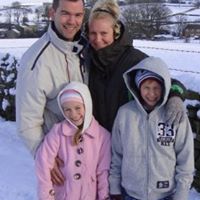
George Paul Faulkner
view source
Reney George Paul Karamoy
view sourceYoutube
News

Drugstore operator CVS Health acquires pharmacy benefits manager Omnicare ...
view source- enterview Partners LLC's Alan Hartman as its financial advisers. The company worked with Morton Pierce, Chang-Do Gong, Robert Chung, William Dantzler, Henrik Patel, Daren Orzechowski, George Paul, Rebecca Farrington, counsel Ken Barr and associate Allison Dodd at White & Case LLP for legal advice.
- Date: May 21, 2015
- Category: Business
- Source: Google

Four held in London raids over alleged terrorist plot
view source- The Westbourne Grove arrest was carried out as a man left an Iranian restaurant, the Alounak. George Paul, 30, who saw the incident, said: The man was shouting something like, Please dont break my arms, please dont hurt me. He was cuffed-up and pushed up against the front of the restaurant. The
- Date: Oct 14, 2013
- Category: World
- Source: Google

Jim Lehrer to step down from daily broadcast at PBS 'NewsHour'
view source- Ed Fouhy, left, executive producer for the Commission on the Presidential Debates, discusses final plans for a presidential debate with George Paul, center, of CBS News, and Jim Lehrer on the debate stage at Washington University in St. Louis. Lehrer was moderator of the debate.
- Date: May 12, 2011
- Category: Entertainment
- Source: Google
Get Report for George Vikram Paul from Merrimack, NH, age ~61





